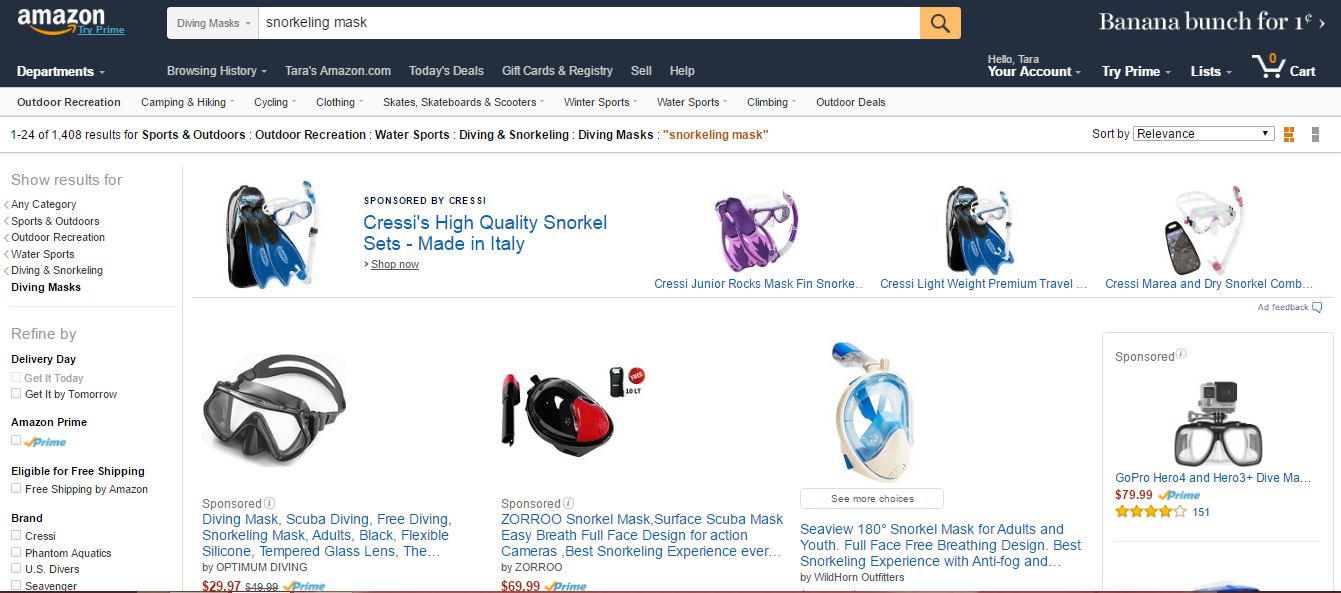What is the Impact of Amazon CTR History on the Amazon Algorithm?

Although most advertisers know that Amazon Sponsored Products is a powerful tool for driving discoverability and incremental sales, sellers are curious if Amazon CTR history has any influence over the Sponsored Products Amazon Algorithm.
Historically, we have seen the most frequent Sponsored Products inefficiencies stem from bid levels, keyword matching and optimization, campaign differentiation and structure but in this post we will focus solely on the impact of Amazon click-through rate (CTR) history.
Before we dive into the value of Amazon CTR history, it’s important for Sellers and advertisers to understand how the Sponsored Products Ad display auction works.
According to Amazon, when customers search or browse Amazon for the products they want to buy, Sponsored Products displays ads in order of relevance to the customer. This process is called the ad display auction.
If a customer searches or browses Amazon for “snorkeling mask”, Amazon finds all Sponsored Products ads that contain the keywords that match the customer’s search or browse page.
For example, if a customer searched for the term “snorkeling mask” and the seller bid on the keyword “snorkeling mask” in an ad group that contains beach towels, Amazon will recognize that the beach towels are not relevant to the customer’s search and will remove them from the auction.
The remaining ads (as seen in the example below) are then ranked and displayed to Amazon customers in the ad rank order.

So, what impacts Ad Rank?
Amazon’s Ad rank is based on the seller’s bid and the likelihood the ad will get clicked (aka Amazon CTR history).
Pro-Tip: Advertisers are only charged when a customer clicks their ad, not when a customer views their ad.
Amazon states, “Campaigns that have been active longer have a better chance of showing ads. Click history plays an important role in our bidding algorithm.”
To improve your ad rank, sellers can increase their current bid or to maximize their ad’s chances of receiving an impression, advertisers can:
According to Amazon, the way the Sponsored Products placements work are as open auctions for all of the qualifying products from all sellers vying for that space.
The “winners” of the Sponsored Products auction are determined by relevancy, bid level, and sales history.
Pro-Tip: It is okay to have multiple ASINs target the same keywords in manual campaigns. Amazon will determine which ASIN to surface based off of the sales history and bid level of the ASINs competing for that keyword.
What is most important is that a seller’s product surfaces over their competitors in the SERP results and multiple products involved in the auction for a keyword can increase the likelihood of that occurring. Advertisers will not be bidding against themselves as long as the ads are coming from the same account.
All of this leads to a very interesting question:
If Amazon CTR history matters, should advertisers build new campaigns or optimize their current campaigns?
The simple answer – optimize your current campaigns whenever possible.
 “The reasoning behind that is – because the current campaigns were built out (ex: 6 months or a 1 year ago) they are currently housing click-through rate history. Whether it’s good or bad, Amazon uses that historical data to calculate your products ranking,” David Cooley, Manager, Marketplace Channels at CPC Strategy said.
“The reasoning behind that is – because the current campaigns were built out (ex: 6 months or a 1 year ago) they are currently housing click-through rate history. Whether it’s good or bad, Amazon uses that historical data to calculate your products ranking,” David Cooley, Manager, Marketplace Channels at CPC Strategy said.
“Amazon can get a good idea if they serve this campaign or this ad ‘X’ amount of times that its going to get ‘X’ amount of clicks.”
“But if a campaign is brand new, they have no data to work with – so Amazon is going to be a little more hesitant to show that ad.”
For example, if you are advertising a product in a brand new campaign (created today vs. advertising the same product in a campaign that was built over a year ago), Amazon will already understand what the CTR is for the old campaign.
“Amazon makes money off of advertising by charging the seller clicks. If it comes down to serving an ad with essentially no CTR history vs. one that already does have CTR history (whether it be good or bad) they are more likely to show the add with more CTR history,” he said.
“This concept is something Amazon has never been completely transparent about until fairly recently. My advice is don’t be too quick to create a new campaign, if you can – restructure the one you currently have.”
Advertisers can add or remove products from existing campaigns – if the campaign itself is where the history sticks.
“If you decide to create a brand new campaign, that is when you will lose the CTR history. Of course, sometimes advertisers don’t have a choice and must create a new campaign – especially if the current campaign is a complete mess.”
“But whenever possible, if the current campaigns are successful or have somewhat of a good structure already in place – make it a priority to reorganize the existing campaign.”
According to Cooley, one of the most important components to organize when optimizing a current campaign structure is to look at the customer search term data, which can be found in the Search Term Report.
“The way those reports are given right now, Amazon doesn’t show you explicitly which search term directly serves which SKU,” he said.
Instead, Amazon will show a search term in relation to the entire ad group that one of your products is served from.
“Unfortunately, when this happens all you really know is that one of – however many products are in the ad group is associated with that search term.”
“One of the first things you should do to optimize your campaign is to build out a campaign structure that will associate each search term with a specific SKU. We recommend building your campaign structure with only 1 SKU per ad group.
“In an ideal world, you want to break up your campaign to include one SKU per ad group. For example, if you have a catalog of a 1,000 SKUs, you should have a 1,000 ad groups,” Cooley said.
By implementing this strategy, sellers are once again able to attribute the success of the term (example: “snorkeling mask”) directly to the SKU purchased or clicked on. By segmenting the campaign, this solution directly impacts the bidding strategy and the overall success of the campaign.
To learn more about this strategy, check out our recent post: “The Best Amazon Keyword Tool“.
For more on how Amazon CTR history impacts Amazon algorithm, email [email protected]
Product Discoverability on Amazon
